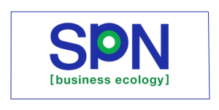GREEN BUILDING CERTIFICATION
Green building certification provides a framework for owners, developers and their teams to set and achieve their sustainability goals. These third-party rating systems aim to improve overall quality of design and construction, integrate a life cycle approach, and actualize the United Nations Sustainable Development Goals in the construction industry.
LEED
Leadership in Energy and Environmental Design (LEED) provides building owners, tenants and operators with
a structure to identify and implement measurable green building design, construction, operations and
maintenance solutions. LEED certification provides independent verification that a building was designed and
built using strategies to achieve high performance in site development, water savings, energy efficiency,
materials selection and indoor environmental quality.
WELL
The WELL Building Standard (WELL) is a road map for creating and certifying spaces that advance human health
and well-being. WELL sets pathways and conditions that support occupant physical and mental health. Performance
standards for design, operational protocols and company-wide practices are third-party tested and verified.
ENTERPRISE GREEN COMMUNITIES
Enterprise Green Communities criteria (EGC) translates the expertise of leading green building practitioners
into a clear, cost-effective certification framework for housing projects in the United States that include
affordable dwelling units.
ENERGY STAR
The Energy Star program, administered by the U.S. Environmental Protection Agency (EPA) and U.S.
Department of Energy (DOE), promotes energy efficiency and provides energy consumption information
for products and devices. The Energy Star label is found on more than 75 certified product categories,
homes, commercial buildings and industrial plants.
PASSIVE HOUSE
Passive House is a performance-based green building certification that focuses on limiting total
energy use and increasing the interior air quality of buildings.
